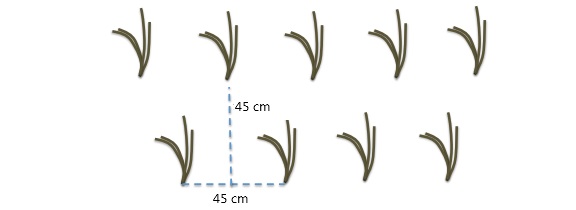Synonyms: Dune fixation, wickerworks
Dune grass planting is a dune restoration technique that reinforces dune stability by establishing vegetation capable of trapping, anchoring, and accumulating sand. This process is effective in both coastal and inland dunes, where wind erosion, overgrazing and sand mobility pose threats to ecosystem stability.
In coastal settings, grasses like marram grass (Ammophila arenaria) and lyme grass (Leymus arenarius) are essential for initiating and maintaining dune growth. Marram grass, in particular, grows vigorously in sandy environments, extending its roots both horizontally and vertically as sand accumulates. This growth pattern allows the grasses to trap sand and stabilize dune surfaces, reducing wind speeds at the ground level and encouraging sand to settle. By reducing the velocity of surface winds, the grasses create a self-reinforcing cycle of sand accumulation and root expansion. This process promotes the formation of “yellow dunes” further inland, while more resilient species like sand couchgrass (Elymus farctus) stabilize the vulnerable “foredune” zone nearest to the shoreline, where occasional seawater inundation occurs.
In arid, inland dune regions where desertification is a concern, planting drought-resistant vegetation such as Leptadenia pyrotechnica and Calligonum comosum serves a similar function. These species prevent sand from moving with the wind by creating dense root systems that hold soil in place. The combined horizontal and vertical growth of these plants enhances soil retention, improves the dune’s physical stability, and reduces the likelihood of sand encroachment on nearby agricultural or pastoral lands. By acting as windbreaks and anchoring loose sand, these plants encourage dune formation and mitigate the physical impacts of wind erosion.
